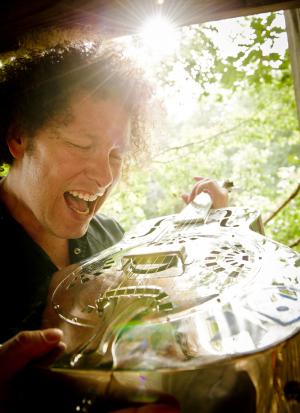
In my video example for this week, I play some bluesy/Indian runs on a fretless, glass-necked guitar I custom-modified for John Frusciante.
This interesting job, which I completed in September 2006, was arranged by Frusciante's guitar tech, Dave Lee.
I took a Warmouth vintage replacement neck, outfitted it with a glass fretless fingerboard and attached it to the 1959 Fender hardtail Strat body John provided.
The original neck was safely removed, and no modifications to the original guitar were made. I only had a chance to check it out for about 10 minutes before it shipped. I wish I would have had more time to play it!
I love playing blues on fretless guitars and also introducing elements of Indian raga, humbly trying to channel both Muddy Waters and Ravi Shankar, two of my all-time favorite musicians. Although I play electric blues in standard tuning, I approach bluesy string bending in a different manner, getting the tension going with linear movement of the note up and down the length of the string (Remember, on fretless guitar it's called a fingerboard, not a fretboard).
The resulting tone is similar to a conventional string bend, but the extra possibilities a fretless instrument creates are wide open. Sequences of intervals smaller than a minor second are possible, as are wide intervallic leaps of an octave and beyond.
Next week we go back to the beginning, a breakdown of my first album, An Introduction to Fretless Guitar, from 1999 -- and an introduction to fretless sustainer playing.
Get The Pick Newsletter
All the latest guitar news, interviews, lessons, reviews, deals and more, direct to your inbox!
Visit Ned Evett at his official website, and read more about him on GuitarWorld.com.
Photo: Gregg Roth
“Even the thought that Clapton might have seen a few seconds of my video feels surreal. But I’m truly honored”: Eric Clapton names Japanese neo-soul guitarist as one to watch
“You better be ready to prove it’s something you can do”: Giacomo Turra got exposed – but real guitar virtuosos are being wrongly accused of fakery, too









